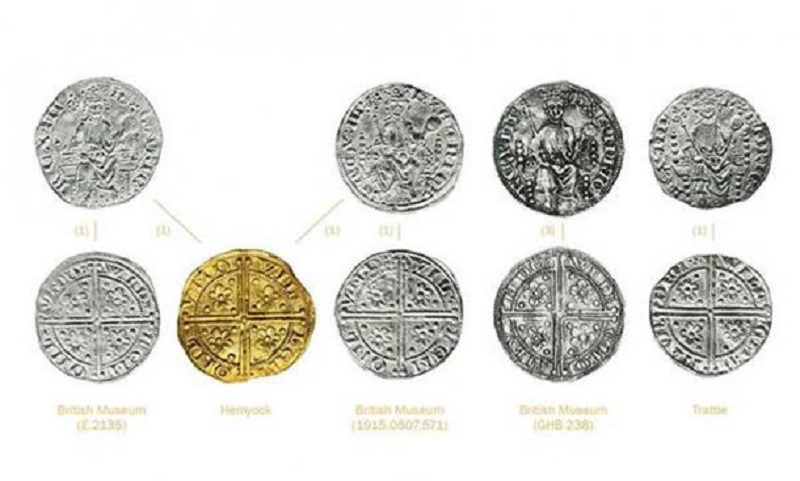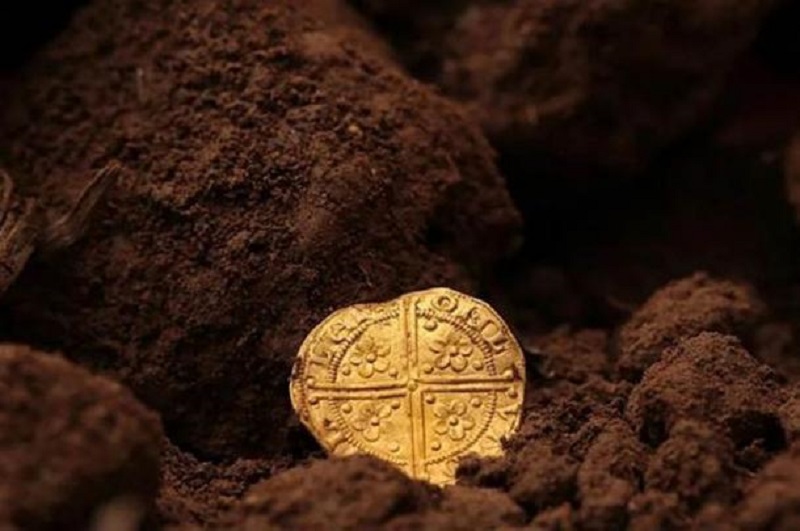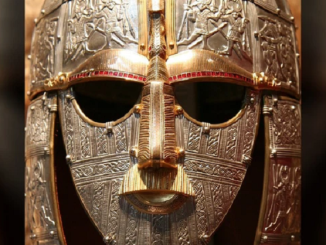An amateur metal detectorist searching farmland in Hemyock, Devon, southwest England, made an astonishing discovery of what is believed to be one of Britain’s first gold coins . The Henry III gold coin dates from the 13th century and is one of only eight in existence. The coin sold on Saturday (January 22) for a cool $729,000 (540,000GBP) at Spink & Son auction house in London.
Given that this is his first metal detector hunt in over ten years , the amateur metal detectorist must be thinking himself incredibly lucky. “Like everyone who has a hobby of continuing to dream, my wish that day came true and I happen to be a very lucky person,” the anonymous man told the BBC when he learned about his good fortune. me. “I feel like I have to apologize to all the other adventurers who are searching and dreaming.”
Under British law, more precisely the UK Treasure Act 1996, a finder is allowed to keep and sell an object that is declared treasure and is not considered part of a wider discovery .
The other side of the Henry III gold coin features a long cross, rose and tablet. ( Spink & Son )
The Henry III gold coin is extremely valuable
A newly minted coin is one hundredth of a pound, so what’s so special about this particular coin? For one, it is made of gold. It is also 765 years old and is believed to have been minted in 1257 during the reign of Henry III. It is believed to have been one of the first coins minted in gold after the Norman Conquest, with the economy dependent on silver coins during that period. There are only eight of these Henry III gold coins in existence and all of them are currently kept in museums.
The Henry III gold coin is just under 1 inch (2.5 cm) wide and is the first of its kind found in 260 years. One side of the coin features a portrait of the bearded and crowned King Henry III sitting on his ornate throne on the Great Pavement at Westminster Abbey, holding an orb in one hand, the other holding the scepter.
There is a long cross, rose and tablet on the other side of the Henry III gold coin. The Great Pavement or Cosmati Pavement in front of the High Altar in Westminster Abbey is a work of unique and exquisite workmanship. The stone pavement was laid by order of Henry III in 1268.

Other Henry III gold coins discovered to date. ( Spink & Son )
Henry III and the power of Parliament
Henry III ruled England from 1216 until his death in 1272. Although he had a long reign, it was not always smooth sailing. He was only nine years old when his father died and he became king. But he only took control of the government in 1234 and by 1237 he was in serious conflict with his barons, who had the power from the signing of the Magna Carta in 1215 to ‘advise’ the house. king about government.
Disputes between his barons and Henry III led to a series of major reforms in 1258, known as the Provisions of Oxford. With these, Henry effectively lost control of the administration, which passed to a council of 15 privy councilors chosen by the barons. This council is responsible for advising the king on the management of the kingdom. In fact, it has taken control.
However, in 1261, Henry revoked these terms when the barons went to war with each other. In 1264, the barony of Montfort, Henry’s main rival, rebelled against him and captured the king and his eldest son Edward. Montfort then ruled in Henry’s name until he himself was defeated and killed by Edward at the Battle of Evesham in August 1265. Although Henry remained king in name, Edward was now in control. When Henry died in 1271, Edward succeeded to the throne as King Edward I.
David Carpenter, professor of medieval history at King’s College London, on CNN, explained that in 1257, before Henry III lost control to the Privy Council, he used treasure that he had personally collected. collected to mint his own gold coins.
View of both sides of a Henry III gold coin discovered in Devon. ( Spink & Son )
Finder really struck gold with the discovery of the Henry III gold coin
The finder of this extremely rare Henry III gold coin, who wishes to remain anonymous, was not immediately aware of its value when he came across it in September 2021. However, Gregory Edmund, a researcher numismatics by Spink & Son, UK based auction house spotted it and immediately recognized what it was.
“This was one of his first days of searching in years, so he clearly couldn’t believe what he discovered,” Edmund told CNN, referring to the finder. “It was an accidental discovery while searching in a completely legal way within the territory, and it was just a case of this particular discoverer not appreciating the significance of the find. until they seek expert opinion.”
Edmund added that the new gold coins were probably made from Byzantine coins and Islamic gold dinars, suggesting that Europe and the Middle East were trading with each other at the time. Meanwhile, the discoverer will be delighted not only by the coin’s market value but also by the historical information it has revealed and will continue to reveal.
The finder wrote a message about finding his Henry III gold coin. “The coin was found in an unprepared area and could quite easily have never been recovered,” he explained on the Spink Live website. “It is now protected for future generations to enjoy and it is truly humbling that I was the one to find it.”




